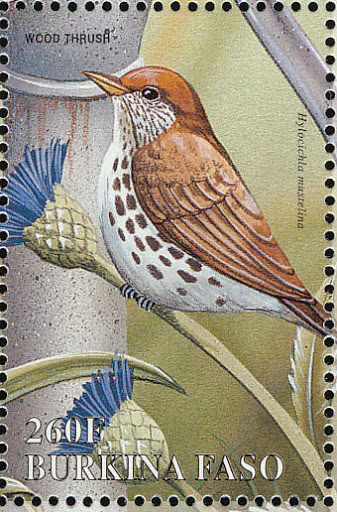There’s something truly mysterious about the wood thrush. It’s small, tinier than its robin cousin. Its cinnamon brown color provides camouflage in the branches and shrubs that the bird calls home. And the wood thrush’s call, made to defend territory and attract mates, sounds as if it emanates from a big, complex instrument rather than this delicate creature. Although the bird’s range is large, reaching from Canada to Minnesota to Mexico, it is particularly beloved in the D.C. region.
Like many of North America’s migrating birds, the wood thrush is in trouble. According to a 2016 study led by Smithsonian researchers, the number of breeding wood thrushes in the United States has dropped by more than 60 percent in the past five decades. “They are the poster child of declining forest songbirds,” says Calandra Stanley, a postdoctoral fellow at the Smithsonian Migratory Bird Center who’s studying how to protect the wood thrush
Wood thrushes (Hylocichla mustelina) make their home here in the spring and summer, then migrate south to the warmer climates of Central America in the winter. They return to the D.C. region to breed in mid-April to early May, a million songs announcing their presence. Wood thrushes can produce two clutches of eggs a year with three to four eggs per clutch. Wood thrushes need vibrant, large wooded areas to survive.
The wood thrush is an omnivore, and feeds preferentially on soil invertebrates and larvae, but will also eat fruits. In the summer, it feeds on insects continuously in order to meet daily metabolic needs. The wood thrush prefers deciduous and mixed forests for breeding. It prefers late-successional, upland mesic forests with a moderately-dense shrub layer. They nest in shrubs and eat caterpillars and larvae that live in the undergrowth, and the tree canopy helps limit hungry hawks’ field of vision.
Sources: Washington Post, April 13, 2020
https://www.washingtonpost.com/lifestyle/magazine/dcs-official-bird-the…

- Login om te reageren
